Ahead of a retrospective on his 75th birth anniversary, late artist-activist Altaf Mohamedi's wife and daughter relive how politics shaped his art, and share plans to make a book of his letters
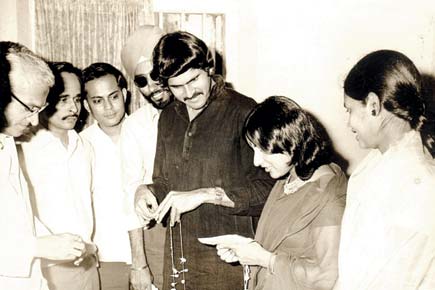
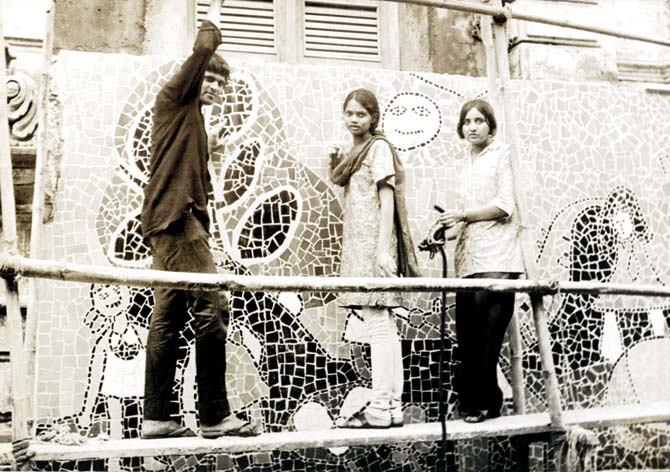
In 1972, Altaf, Navjot (right) and Shobha Ghare executed a 127-feet long and eight-feet high mural at Dawoodbhoy Fazalbhoy High School at Bhendi Bazaar, which reflected children’s drawings from a school in Kihim. “It was our first collaborative work together. We used coloured ceramic tiles specially manufactured by Johnson Tiles,” says Navjot
ADVERTISEMENT
We spot a gleaming, ebony-hued round table in Navjot Altaf's living room at her Bandra residence. If the table could speak, it would recall how the late artist-activist Altaf Mohamedi (1942-2005) would sit on one of its chairs - the one that offered a 45-degree angle view of the TV set - for hours to watch cricket matches. "His first choice was to be a professional cricketer but a ligament problem didn't let him pursue it. So, he turned to art and literature," reminisces Navjot, his 68-year-old wife and well-known multimedia artist. She first met Altaf in 1970, when she was a student at Sir JJ School of Art. He had displayed his works on the pavement gallery outside Jehangir Art Gallery. This was one of his first attempts to carry art beyond haloed confines.
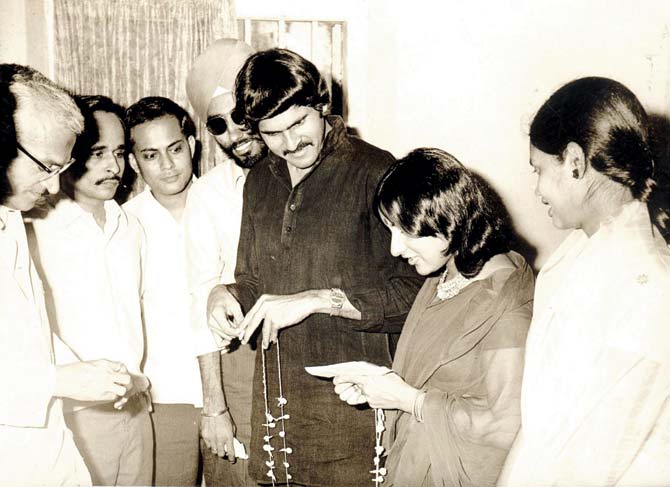
(Second from left) Artist Prabhakar Barwe, architect Arun Das, cousin Vijayvir and Shobha Ghare were part of the couple’s civil marriage
At this table, Altaf also engaged in discussions with his wife, and daughter Sasha, on everything under the sun - from art, politics and philosophy to decisions on the TV set to buy. "The reason we had a round table [instead of a four-cornered rectangular one] was to assert that all of us are equal. My father was a huge source of inspiration behind my reading and music. I grew up listening to Joan Baez, Bob Dylan, Leonard Cohen and ABBA," says 42-year-old Sasha, an art critic and curator, over a phone call from Miami, before she flies down for A Retrospective by Altaf Mohamedi, presented by DAG Modern Art Gallery on his 75th birth anniversary on August 18.

Sasha Altaf; Navjot sits in Altaf’s favourite chair, with his sister and noted painter Nasreen’s works in the backdrop, at her Bandra residence. Pic/Datta Kumbhar
The exhibition will feature his artworks spanning four decades, including those that are in DAG's collection and his early works from 1960s lent by the family. Navjot has also planned to showcase six films that she created on the artist, commissioned by DAG - one is a photo-reel of his art while the rest are her interviews with his associates, including Jitish Kallat, who wrote a conversational piece for one of his catalogues; historian-author Dr Mariam Dossal, his favourite niece, who shares his love for Elvis Presley; artist Vivan Sundaram, an observer of Altaf's works and political beliefs; and documentary filmmaker Anand Patwardhan, who found support in Altaf as the artist aligned his work with Marxist political ideology.
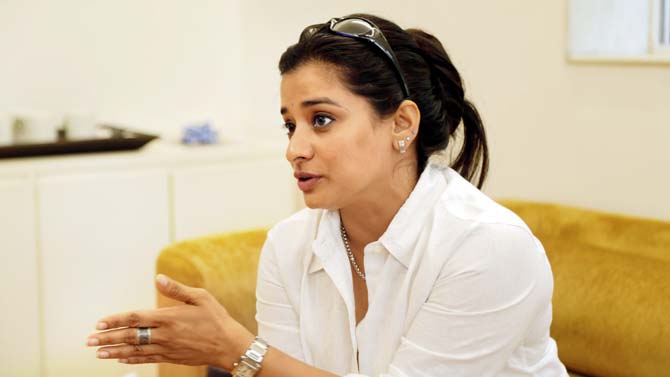
The Marx effect
Born in Baroda at a time when the Quit India movement had gained momentum, Altaf spent his formative years in Bandra, where his family shifted in 1943, and at the residential Scindia School in Gwalior. In 1961, he went to London to receive art education at Saint Martins - the alma mater of his elder sister and noted painter Nasreen Mohamedi - and later, at Chelsea College of Art. "His interest in Marxism was stimulated at this point, when he was exposed to The Beatles, The New Left Review and emergence of the counterculture movement... with students leading the protests," says Navjot. However, rattled by racism, Altaf returned to Mumbai in 1967.
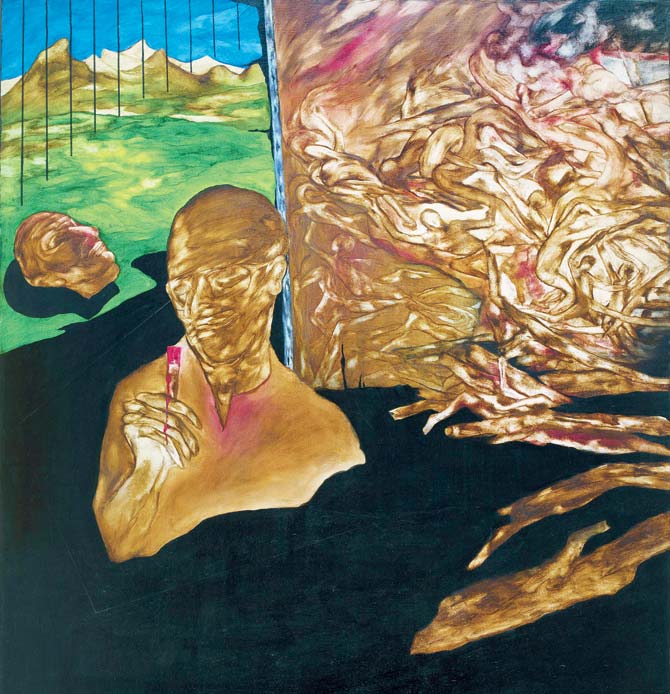
My People Have Died as Fires Die, Without a Trace - III, 1992
Join the movement
In the next few years, he went on to share a rented flat in Santacruz with Jyotindra Jain, MJ Akbar and Ram Rahman, and interact with artists, writers and musicians, including VS Gaitonde and Neela Bhagwat, who helped shape his world view. "They would discuss art and intellectual pursuits at Café Samovar. Altaf believed that only when one moved out of the protected space of a studio, did one realise the system surrounding him," says Navjot.
From 1972 to 1978, Altaf and Navjot were actively involved with Proyom (Progressive Youth Movement), linked to CPI (M-L) politics in Mumbai, which gave wings to their politically inspired art. Sasha, born in 1974, says, "Our house [a bungalow on Perry Cross Road before the family shifted to their present apartment] would be filled with activists, filmmakers, sociologists, musicians and economists. They would hold meetings, engage in debates and design posters at home; I could sense the fervour in them."
Navjot adds, "At that time, I set up a screen printing table in my house. Overnight, we would make 500 text-based posters. We would stick them at railway stations and other public spaces as guerilla girls. We believed that a poster is no less a work of art than the canvas." The revolutionary posters addressed issues like freedom of speech and socio-cultural inequalities.
Speaking to industrial workers, Altaf displayed his paintings at the Matunga Labour Camp. He participated in study circles with students from the locality, discussing writings by Marx, Lenin, DD Kosambi and Ernst Fischer. The couple also created illustrations for Lalkaar, a students' magazine brought out by Proyom.
Starting young
In 1980s, even after Proyom faded away post-Emergency, Altaf continued to work with students. "He was extremely fond of the youth. He was a patient father, a gentle and progressive husband. Both of us contributed to running the house. We worked with the Mobile Crèches [non-profit for children of marginalised population], he also designed a Montessori teaching programme at New Habib High School because he felt that a child's imagination could be enhanced through art from a young age. He travelled across India, met historians like Romila Thapar, visited museums and returned with print material for the exhibition, History Through Art, to expose students to Indian history.
Unfortunately, the school authorities found it too expensive to document," says Navjot, adding with a laugh, "Even Altaf never liked documenting his exhibitions. But that's essential, we realise now; there is no documentation of many important events!"
At a time when curation and collaboration wasn't even part of the art world dictionary, he curated an exhibition of contemporary art at the school. One floor was converted into a gallery showcasing works by Prabhakar Barwe, Sudhir Patwardhan, Gieve Patel, Laxman Shreshtha and Nalini Malani. Altaf was also a writer, penning diaries, notes and poetry. Sasha, who has been editing his journals, to be published as a separate book, says, "In the process, I felt that I had been able to spend time in his presence once again. Not many are aware that he was a man of letters. We plan to keep his words and art alive through his archive, more publications and films."
From: August 19 to November 4, 11 am to 7 pm
At: DAG Art Gallery, VB Gandhi Marg, Kala Ghoda
Call: 49222700
You may also like - Photos: 10 things stopping you from getting pregnant faster
 Subscribe today by clicking the link and stay updated with the latest news!" Click here!
Subscribe today by clicking the link and stay updated with the latest news!" Click here!






